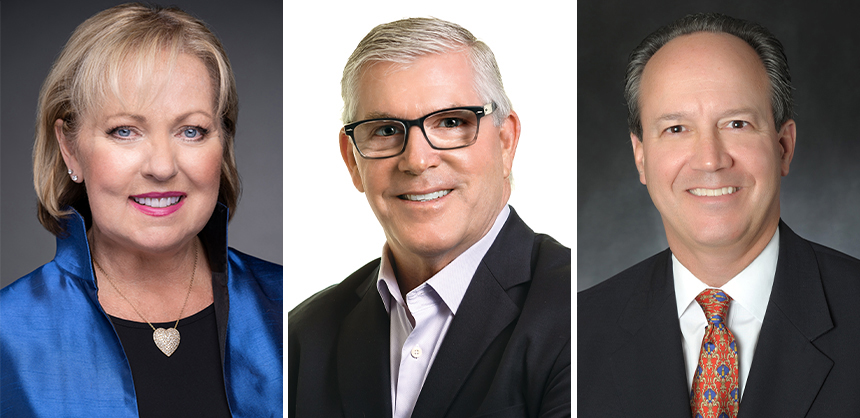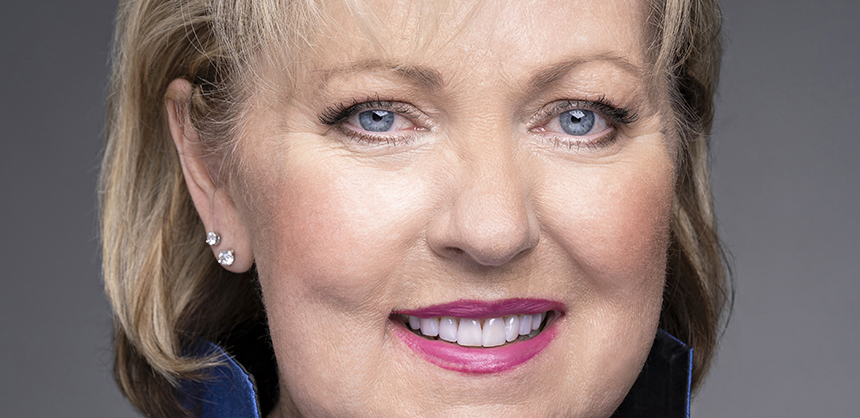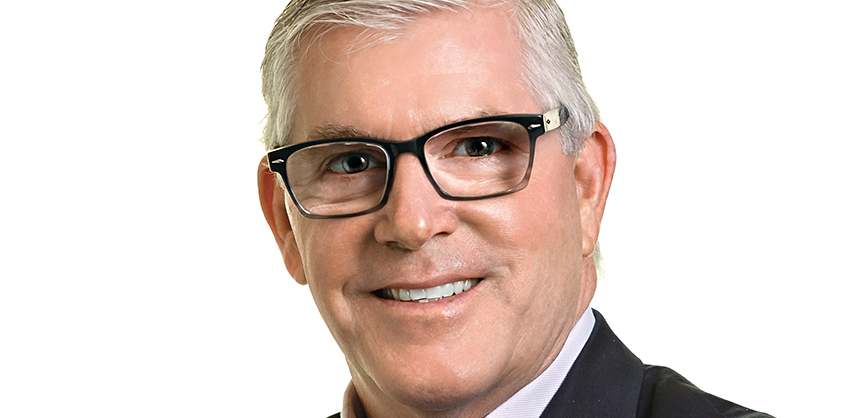2021 Association Industry ForecastJanuary 21, 2021
Experts Foresee a Strong Rebound From the COVID-19 Pandemic By Henry Fitzgerald2021 Association Industry Forecast
Experts Foresee a Strong Rebound From the COVID-19 Pandemic
From left: Susan Robertson, CAE; Don Welsh; David DuBois, CMP, CAE, FASAE, CTA
Things got off to a flying start in 2020 for the global exhibitions, meetings and events industry. All the forecasts predicted a year that would likely exceed expectations. However, no one foresaw 2020’s COVID-19 pandemic and its subsequent, devastating effects. Looking ahead to 2021, association leaders say to expect a couple of slow quarters, then things will take off later in the year and into 2022. We asked three of these leaders for their thoughts on the impact of the pandemic in 2020 and how the industry can begin the recovery in 2021.

David DuBois, CMP, CAE, FASAE, CTA
President and CEO, International Association of Exhibitions and Events
Q: How has the COVID-19 pandemic affected you/the industry in 2020?
A: The COVID-19 pandemic has had a very devastating affect on the global exhibitions and events industry. Thousands of jobs have either been furloughed or have experienced permanent layoffs.
Q: How will the pandemic affect the industry in 2021?
A: This pandemic has already negatively affected our industry in 2021. Most exhibitions and events have been moved out of the first two quarters of 2021. This has been due, in part, to the increased need for more expansive testing and the vaccinations that have to actually take place in the arms of business travelers.
Q: When do you see things returning to “normal?”
A: There won’t be a “return to normal” for a long time. The “new normal” will consist of lower attendance numbers and more hybrid/virtual events. We are hopeful that our industry will experience some positive economic impact comeback by the middle of 2021.
Q: Will virtual/hybrid meetings replace face-to-face meetings?
A: Hybrid/virtual exhibitions and events will not replace face-to-face activities. They will continue to augment them and help to expand the marketing opportunities that will drive expanded and more global audience participation.
Q: Is there room for both virtual/hybrid and face-to-face meetings?
A: There is plenty of room for both hybrid/virtual and face-to-face events. Exhibitions and events organizers are having to adjust to the realities that they face. The focus on enhanced engagement techniques and offerings is a must in order to maximize the new revenues-generating models that have been thrust upon us.
Q: What other challenges will meeting planning professionals face in 2021?
A: Our industry management teams have to review all of their staffing requirements and focus on the “re-skilling” of their employees as current job responsibilities continue to shift.
Q: What encouraging signs do you see ahead for the planners in the meetings industry?
A: Our industry has been able to pivot and create much safer environments to meeting at our venues. We will and must continue to advocate and educate our government officials (at the federal and local levels) about the value and importance, and positive economic impact, that our industry has on employment and tax generation.
Q: In your opinion, what are the biggest new trends for the meetings industry in 2021?
A: It is very encouraging that more rapid testing and several vaccines are becoming available. We must gain the “confidence” of the traveling public before we experience the kind of positive return to healthy travel that we need.
Q: How has technology impacted the meetings industry, and what do you expect 2021 to hold in terms of the use of technology to enhance meetings?
A: The enhancement of technological offerings has been driven by the need for virtual connectivity. This will assist our industry as we make our ways back to the excellent and healthy industry that we enjoyed in 2019.

Susan Robertson, CAEPresident & CEO, American Society of Association Executives (ASAE)
Q: How, specifically, has the COVID-19 pandemic affected you/the industry in 2020?
A: It’s obviously been a very disruptive year, financially and operationally, for ASAE and the entire association community. This pandemic has really upended our business models by constricting many of the traditional revenue streams that associations depend on to carry out their vital missions. The loss of thousands of cancelled in-person meetings and conventions alone has been devastating for associations, to say nothing of COVID’s impact on membership, sponsorships, advertising and other traditionally stable revenue sources. Surveys conducted by the ASAE Research Foundation suggest that more than 70% of associations have had to cancel in-person meetings or events that were scheduled to be held in 2020. Many, ASAE included, have pivoted quickly to move major meetings to a virtual setting, but the impact on associations’ bottom lines will be felt for months, if not years to come.
Q: How will the pandemic affect the industry in 2021?
A: I do think the impact on meetings revenue will extend into 2021 and beyond. I am strongly convinced that face-to-face meetings and events will bounce back. ASAE is planning on some in-person events after the first quarter of 2021. We will have contingency plans, but that’s our hope right now. But that said, it’s reasonable to expect some hybrid nature of conference planning in 2021 and beyond — where you have a live event and the opportunity to participate virtually. ASAE is in the midst of a strategic planning process, initiated before the pandemic actually, and we are envisioning becoming a digital-first organization. That doesn’t mean we’re going to stop doing in-person conferences, but it will mean taking more of an omni-channel approach to the way our members connect and learn within ASAE, where some in-person offerings will be reimagined for virtual formats that can be stream-able and on-demand. This creates some opportunities for future engagement of a wider audience if we can invest now in the right tools to keep us ahead of the demand.
Q: When do you see things returning to “normal?”
A: I think the biggest mistake any of us can make as association leaders right now is to be complacent, thinking that things will soon return to “normal” and we can carry on with the same game plan that we had before this pandemic disrupted our daily lives and operations. Not only can we not afford to wait this out, the landscape is totally different than it was before COVID-19 disrupted our thinking and our planning. The needs of our members and our industry partners are different now, and we have to adopt a greater sense of urgency if we want to remain relevant in their eyes. I should also say that the needs of our staff — and how the actual work gets done — have continued to evolve as well.
Q: Will virtual/hybrid meetings replace face-to-face meetings?
A: No, there are some advantages to a face-to-face meeting that can’t be replaced in a virtual setting. This pandemic has really highlighted the value of human interaction and how difficult it is on all of us when that goes missing. Meetings might look different in 2021 and beyond, but we’re all craving physical interaction and we can’t wait to meet again face-to-face when it’s safe and when it makes sense.
Q: Is there room for both virtual/hybrid and face-to-face meetings?
A: I think there is room for both, and frankly, I think our members’ expectations will be that they have some omni-channel access to programming in the future if they’re not able to attend a face-to-face meeting. We’ve seen the emergence of telehealth and increased supply chains for home delivery, and we can learn from those industries as well. COVID-19 has changed the way people want to work and the way they want to shop for services, and their expectations of associations are no different.
Q: What other challenges will meeting planning professionals face in 2021?
A: First, I want to commend the professionalism and courage of meeting planners throughout the industry for how they have risen to the occasion this year. This pandemic has put meeting professionals under extreme pressure to adapt and completely reimagine programming and logistics for countless events, and it’s incredibly impressive to see the creativity and execution of these virtually transitioned meetings. We are also constantly evaluating all of our products and services — and anything else that qualifies as an expense of resources — to gauge what we can de-prioritize in this new environment. Our self-assessment needs to be continual, even as we hopefully emerge from this crisis in 2021.
Q: What can the industry do to better prepare for seismic events such as this pandemic?
A: I do think that contingency planning is going to be crucial in everything we do. We need back-up plans for everything, because who knows what disruptive event is around the corner? I would say that shaping a post-crisis strategy is really a critical governance priority right now. Association leaders and their boards need to understand current risks as well as those that could emerge down the road as we develop a new playbook for our organizations. Together, management and volunteer leadership need to consider what lessons we have learned throughout the pandemic; what are the most crucial stakeholder needs to focus on; how should we align our staff to meet these needs; and what new business opportunities have emerged during the crisis.
Q: What encouraging signs do you see ahead for the planners in the meetings industry?
A: Meeting professionals have already proven to be resilient and adaptive to extraordinary circumstances. We’re going to take the lessons we learned during this pandemic and bet big on our future. There’s a sense of community in the meetings industry and a desire to share information and learn from each other that can really help us weather the circumstances created by this pandemic. We’re all going through similar challenges. If ASAE tries something and it works — or it doesn’t — that’s something we want our members and our industry colleagues to see and learn from.
Q: In your opinion, what are the biggest new trends for the meetings industry in 2021?
A: Remotely-accessible technology that captures our members’ engagement, as well as their up-to-the-minute feedback about our offerings, is a critical development.
Q: How has technology impacted the meetings industry, and what do you expect 2021 to hold in terms of the use of technology to enhance meetings?
A: Fortunately, we are seeing platforms out there that make a virtual meeting as close to an in-person as possible and provide for networking, mentoring and connectivity that create a lot of value for participants. That technology can be used to enhance an in-person meeting just as it can be harnessed to transition to an all-virtual offering.

Don Welsh, President and CEO, Destinations International
Q: How, specifically, has the COVID-19 pandemic affected you/the industry in 2020?
A: The pandemic has been the global equalizer for all tourism destinations around the world. In the past, we have all had to face acts of terrorism and natural disasters and other grave situations and disruptions. However, we have not faced anything like a pandemic that has brought almost all segments of tourism to a halt around the world.
Q: How will the pandemic affect the industry in 2021?
A: We remain hopeful that [the] vaccine will . . . allow for this essential step in the recovery process to take place. We are seeing modest recovery in many resort, mountain, lake and beach destinations, but a much slower recovery pace in large, urban cities. We believe that once workers can safely return to their offices in larger urban destinations, the recovery of business travel, and smaller meetings and events, will begin to take place.
Q: When do you see things returning to “normal?”
A: I believe the term “return to normal” is no longer applicable to tourism and travel. I believe the leisure traveler will continue to be data-driven in their decision to travel. In the case of large gatherings, for meetings, sports events, music concerts, etc., this will require a collaboration with all of the partners, such as venues, hotels, attractions, etc., for this to become a reality. We also believe that in the meetings and events industry, the hybrid option of attending in-person or virtually, is here to stay.
Q: Will virtual/hybrid meetings replace face-to-face meetings?
A: Recently, I have had the opportunity to attend live/hybrid events, such as MPI WEC in Grapevine, Texas and Connect in Orlando, Florida. These meetings were a reminder that we can gather safely and practice health guidelines in terms of masks, social distancing and health protocols, such as rapid testing and temperature checks, as part of the meeting experience. I believe that many meetings will offer the attendees the option to meet live and in person or for multiple reasons, such as health concerns, budget challenges or scheduling challenges, to meet virtually. This was very apparent with our annual convention in July where we expanded the attendance of the event by over 1,000 people, with over 60% of attendees being first-time attendees. In many cases, the sessions are recorded and great thought leadership and speakers can be captured in perpetuity.
Q: Is there room for both virtual/hybrid and face-to-face meetings?
A: Yes, I believe strongly that both can co-exist to meet the various needs of the attendees, exhibitors and host organization.
Q: What other challenges will meeting planning professionals face in 2021?
A: Assessing the logistical challenges of rebooking an existing meeting, or booking a new meeting, as the health and scientific community, along with our industry, evolves and adapts in the months ahead. This is where I believe destination organizations can play a critical role for the planner in terms of providing up-to-date information and other resources that will be critical in the decision process.
Q: What can the industry do to better prepare for seismic events such as this pandemic?
A: I believe our members and industry have been very responsible in having crisis plans in place to manage a situation in many cases before it occurs, when it is happening and in the post-recovery. However, with a global pandemic such as COVID-19, there is no existing playbook or past experiences that are applicable for our industry. We are building these crisis response plans to include information about a potential pandemic in the future, and hopefully we will be better prepared globally in the event that something like this takes place in the future.
Q: What encouraging signs do you see ahead for the planners in the meetings industry?
A: In the immediate future, the planner may not have some of the resources and hotels, convention centers, transportation companies and other essential partners due to the significant layoffs and furloughs that have resulted during the pandemic. These organizations will not be able to restaff to previous levels until there is a business justification and the financial resources are available to do so. Therefore, increased collaboration among the meetings industry organizations, and real-time online data by the destinations and partners will be critical to offset some of the personnel reductions that existed prior to the pandemic.
Q: In your opinion, what are the biggest new trends for the meetings industry in 2021?
A: Again, it is encouraging to see meetings and events being rebooked for 2021 and beyond. As with our own meetings, some will take place in a hybrid environment offering both a live and virtual experience. I see this as a trend that will happen in 2021 and in future years based on some of my previous comments and observations. I do believe we are seeing a greater number of people willing to consider traveling for both personal and business, as health standards are more consistent and streamlined along with a hope of [the] vaccine that will ensure the traveling public that every precaution is being taken, and their health and safety is the highest priority. This is where I find some encouragement.
Q: How has technology impacted the meetings industry, and what do you expect 2021 to hold in terms of the use of technology to enhance meetings?
A: Technology continues to enhance the meeting experience both for those meeting in person and in a hybrid environment. On a daily basis, we have all realized that we can meet successfully and accomplish business objectives in a virtual environment. However, we also believe that nothing replaces the in-person experience of a live meeting or the joy of a personal vacation. | AC&F |










